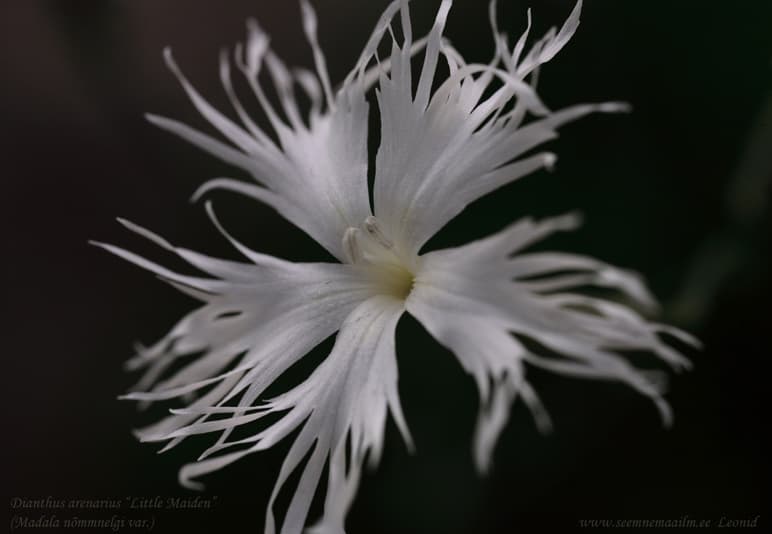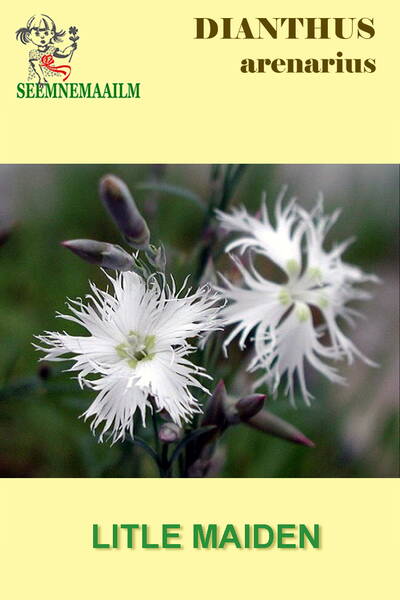Ex Tax: 1.45€
Special aroma! It’s like light, delicate moths fluttering in a white cloud over the compact bushes...
Numerous flowers with fringed edges evoke romantic motives with their tremulous appearance and delicate aroma. Abundant flowering will decorate mixborders, curbs, rocky hills and supporting walls.
Agricultural technology: sowing for seedlings - March-April.
The seedlings are maintained at a temperature of +18+22°C for 14-16 days, then the temperature is lowered to +16°C and watering is reduced.
Sandy carnation is planted in the ground in early June in partial shade. Further care consists of moderate watering and timely application of fertilizers.
* Sandy carnation is an unpretentious and long-flowering perennial that forms dense turf, with sterile, densely leafy, shortened basal shoots. Flowering stems are straight or ascending, 10-30 cm high, simple or sometimes branched at the top, bare, bluish or green. Leaves of sterile shoots are 1.5-3.5 cm long and 1-2 mm wide, linear or linear-lanceolate, straight or sickle-shaped, rough underneath; stem leaves up to 2 cm long, fused at the base into a sheath up to 2 mm long. The flowers are fragrant, often solitary.
The calyx is cylindrical, 18-25 mm long, with pointed teeth; bracts, four in number, ovoid with a short pointed tip, covering a quarter of the calyx.
The petals are white, less often pinkish; their plate is deeply fringed and multifidued into filiform lobes, on the upper side with hairs, a greenish spot and purple dots.
Blooms in June-July, bears fruit in July-August. In culture since 1732. Grows well in dry soils. Does not tolerate dampness.
Under natural conditions it grows in pine forests and on sand.

Sand Pink. Bot. syn.: Dianthus arenarius L. subsp. borussicus.















